
EU helps Villages in the Republic of Moldova Produce Renewable Energy Locally
Hancesti district, located in the centre of the Republic of Moldova, can be considered truly green. In recent years, natural gas and coal – associated not only with higher costs, but also with environmental pollution – are being increasingly replaced by biomass and solar energy in the district. This switch to renewable sources has been supported by the European Union under the Energy and Biomass Project, which is part of the EU4Energy initiative.
With a population of over 100,000 inhabitants, Hancesti is a key player in strengthening the Republic of Moldova’s energy independence and reducing CO2 emissions in the country.
Schoolchildren in Cotul Morii no longer have to worry about freezing classrooms
For students and children at the secondary school and kindergarten in the village of Cotul Morii, located in Hancesti district around 80 km west of the Moldovan capital of Chisinau, winters are no longer so cold. Built from scratch following the severe floods that hit the village in the summer of 2010, the local school – which covers an area of about 3000m² – has been connected to an efficient biomass heating system from the outset. This system was created with the support of the European Union under the Moldova Energy and Biomass Project, which is implemented by the United Nations Development Programme (UNDP). The new, efficient system allows the 250 children and teaching staff to feel warm, even on the frostiest of winter days.
Cristian Bordeianu, a fourth grade student at the school, says that children are no longer scared of being cold at school. This is due to the fact that the warmer temperature in their classrooms now allows them to feel comfortable during classes, which in turn makes them more active and creative students. “We come to school with pleasure, because here it is warm and comfortable,” says Cristian.
Since the school opened its doors in 2013, it has been heated with biomass briquettes. Moreover, as of last year both the kindergarten and kitchen have also been benefited from a steady supply of hot water, produced via by solar energy. “It is an investment that is undoubtedly worth all the effort,” announces the manager of the institution, Rita Danila. “The safety of children was, and remains, our first concern. Now, they feel more protected.”
 Children at a green school in Cotul Morii village
Children at a green school in Cotul Morii village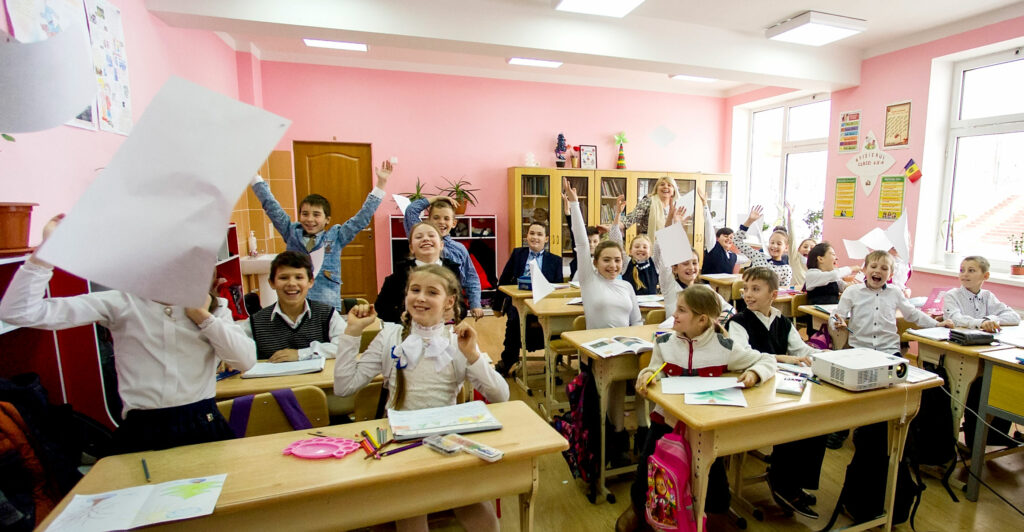 Children at a green school in Cotul Morii village
Children at a green school in Cotul Morii village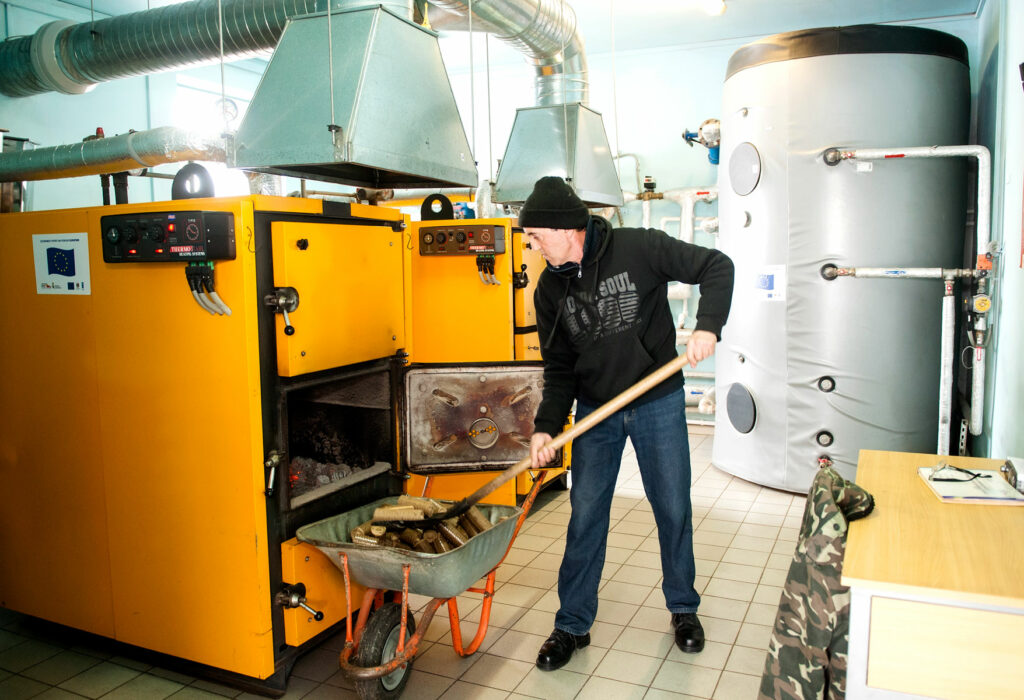 Vasilii Gaina throws pellets into a biomass boiler.
Vasilii Gaina throws pellets into a biomass boiler.
For the mayor of Cotul Morii village, Lucia Gustiuc, the switch to green energy is not just a way to save around 10,000 lei per month (almost €500), which could go towards purchasing sports equipment and teaching materials. Rather, it is a chance to keep the money paid for biofuel at home in the Republic of Moldova, where the fuel is sold by local producers. “One of the basic mottos that guides our activity is ‘Energy from biomass keeps the money at home’. We are glad that by connecting the school and public institutions to biomass heating systems we are contributing to business development and the creation of new jobs in our country,” states Gustiuc.
The producer “Biocarbune”, based in Hancesti, has biofuel supply contracts with the town hall of Cotul Morii village, and is now providing its biomass briquettes for its fourth year running. The development of this particular sector in Moldova allowed Ion Gira, Biocarbune’s founder and manager, to develop his own briquettes-making business, which now provides him with a decent living. The producer delivers around 100 tons of briquettes per year to the secondary school and kindergarten. Gira explains that briquettes produced from wood sawdust, in addition to having a high heat supply capacity, are more environmentally friendly than natural gas or coal.
8 villages, 12 public institutions and over 5,600 beneficiaries
Since 2011, a total of eight villages from Hancesti district – Cotul Morii, Carpineni, Crasnoarmeiscoe, Dancu, Dragusenii Noi, Loganesti, Boghiceni and Obileni – have benefited from the European Union’s support under the Energy and Biomass Project for renewable energy sources.
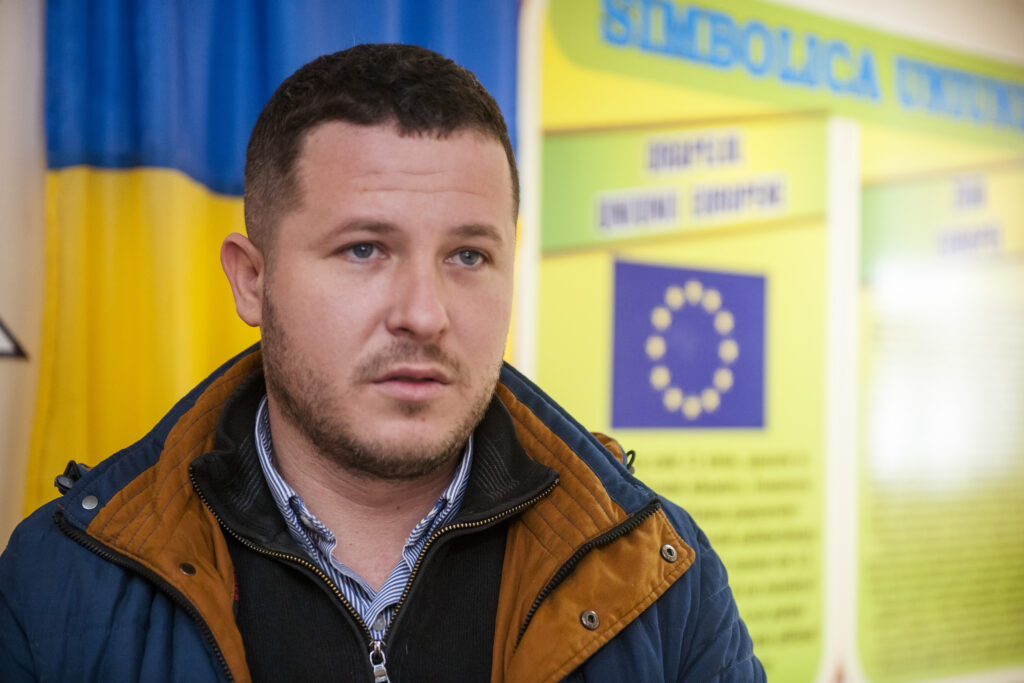 Ion Gira, manager of “Biocarbune”, a company supplying pellets to Cotul Morii school.
Ion Gira, manager of “Biocarbune”, a company supplying pellets to Cotul Morii school.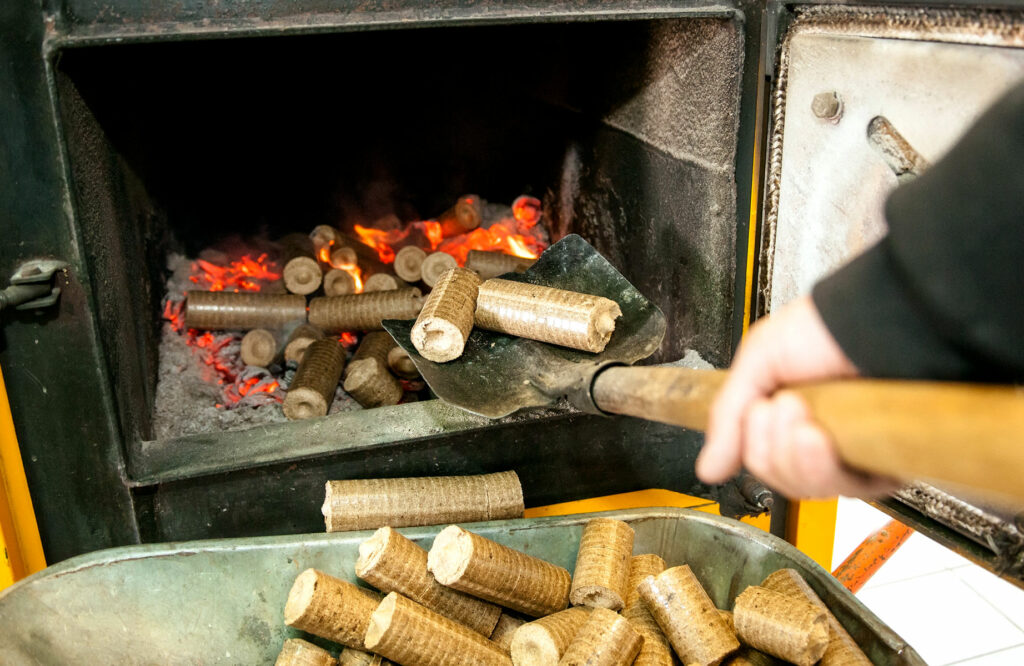 Vasilii Gaina throws pellets into a biomass boiler.
Vasilii Gaina throws pellets into a biomass boiler.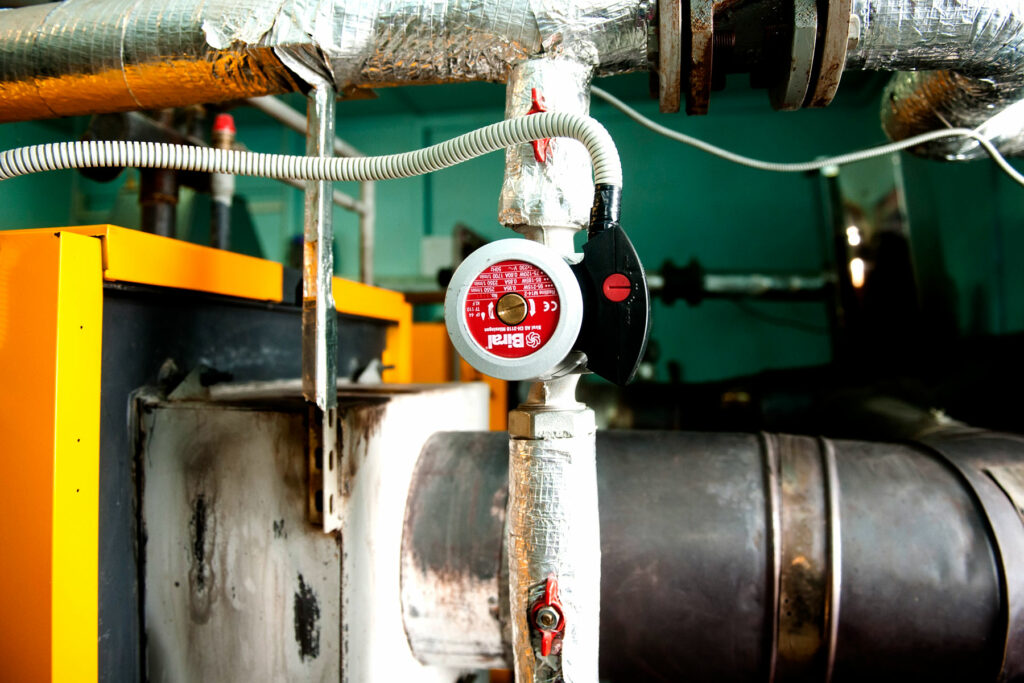 New energy-efficient biomass heating system
New energy-efficient biomass heating system
Currently, 12 schools, kindergartens, town halls and other public institutions in these villages are enjoying the benefits of renewable energy, two of which are provided with hot water through solar energy. As a result, over 5,600 people from the Hancesti district now have access to renewable energy produced locally in the Republic of Moldova.
When money spent on biofuel remains inside the country, its cycle of use becomes far more beneficial. “More jobs are created, and the number of green energy beneficiaries in Hancesti district increases,” explains Ghenadie Buza, President of Hancesti District.
Heating a larger area at the same cost
Crasnoarmeiscoe village in Hancesti became familiar with green energy in 2012, when a kindergarten in the village (known as “Kindergarten №1”) was linked up to a biomass heating system. Since then, the transition to green energy has continued, and today another kindergarten in the village – as well as Dimitrie Cantemir high school and the local town hall – enjoys the benefits of renewable energy.
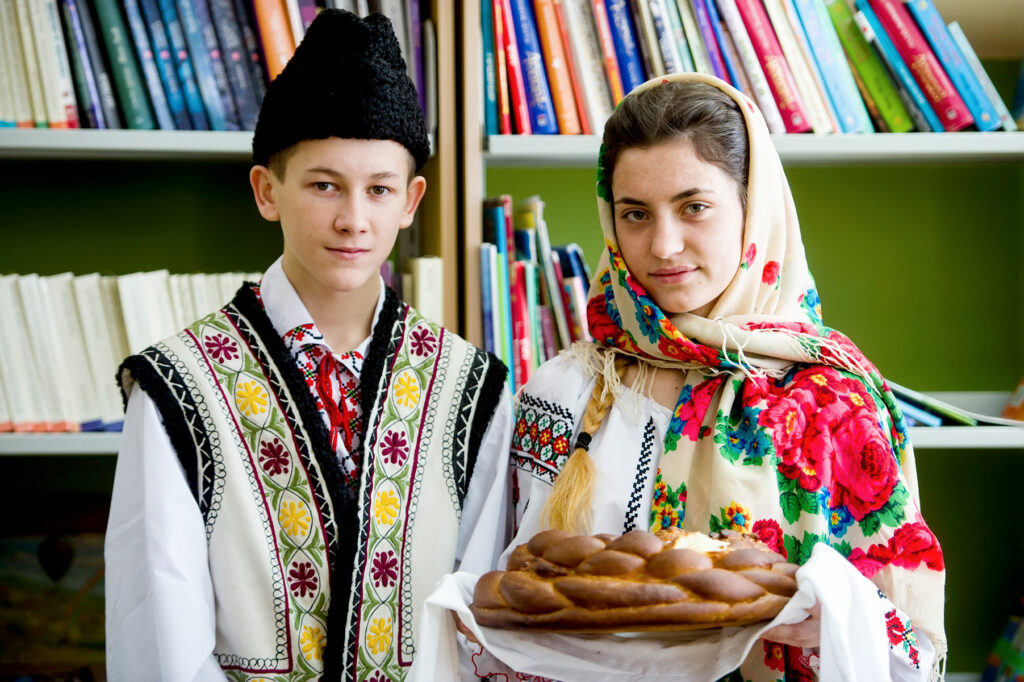 Children at a green school in Cotul Morii village
Children at a green school in Cotul Morii village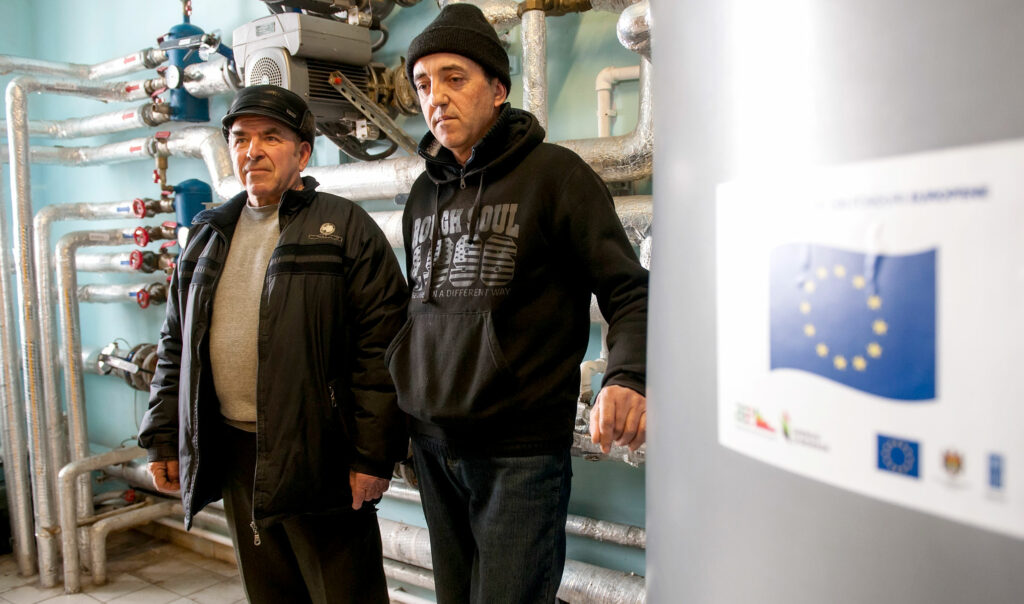 Nicolae Verdes and Vasilii Gaina are the operators of the new energy-efficient biomass heating system.
Nicolae Verdes and Vasilii Gaina are the operators of the new energy-efficient biomass heating system.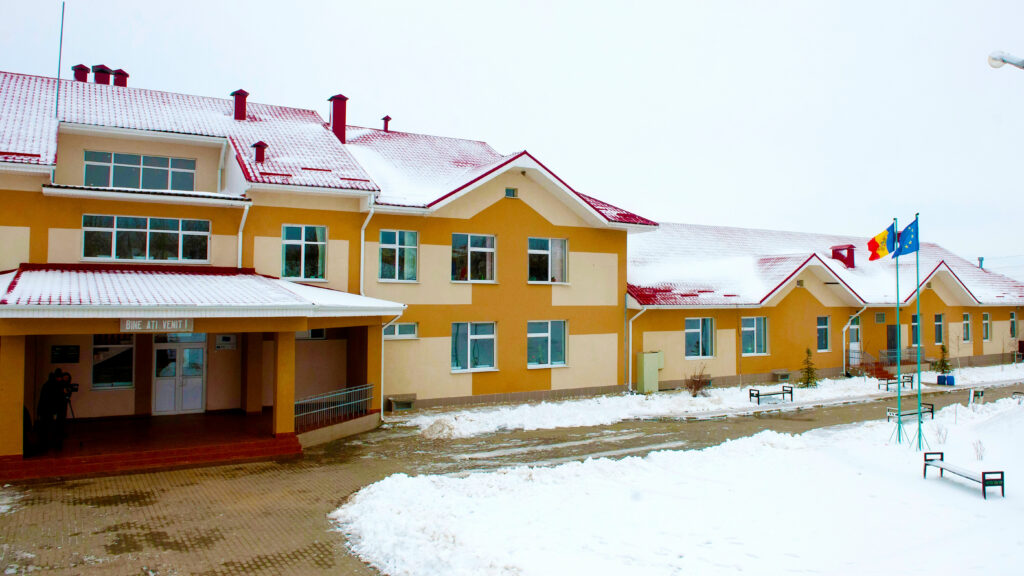 Green school in Cotul Morii village
Green school in Cotul Morii village
Furthermore, in 2017, thermal power stations were built by the town hall and kindergarten in Talaiesti, a village in the commune of Crasnoarmeiscoe. Additionally, solar panels were installed in Kindergarten №1 which produce hot water and replaced five electric boilers.
“The savings made allow us to increase the heated surface of public institutions. For example, if until now only two rooms were heated in the kindergarten with the help of wood and coal, now heating comfort is ensured for the entire building, with a surface of about 900m², and expenses have remained basically the same,” explains the Mayor of the village, Alexandru Todoseiciuc.
Winning over the sceptics in Carpineni
Ion Carpineanu, Mayor of Carpineni village in Hancesti – which has a population of over 10,000 –, remembers that in 2011, not even a single local public institution was heated by green energy. Today, all three secondary schools in the village, plus its high school and kindergarten, are provided with heat generated from biomass.
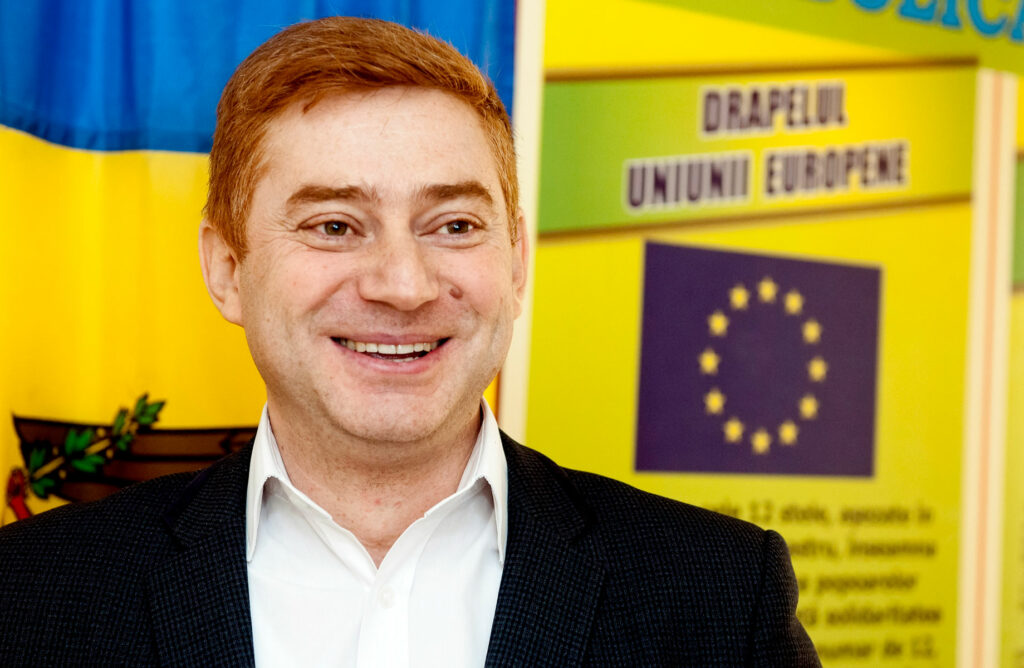 Ion Carpineanu, Mayor of the village of Carpineni.
Ion Carpineanu, Mayor of the village of Carpineni.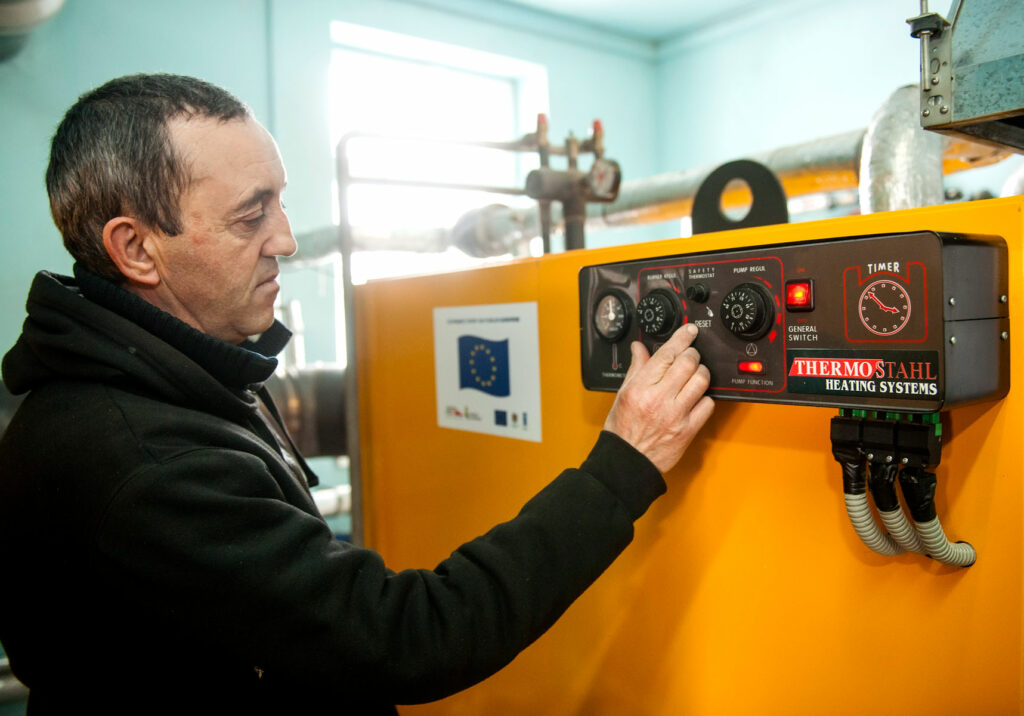 Vasilii Gaina is the operator of the new energy-efficient biomass heating system.
Vasilii Gaina is the operator of the new energy-efficient biomass heating system. New energy-efficient biomass heating system
New energy-efficient biomass heating system
As a result, the previous scepticism felt among the villagers – who were always dubious over the idea that heat could be produced from “straw” – has for the most part disappeared. Now, people are much more convinced by the positive benefits of using biomass.
“People are convinced that technologies from Europe can be applied here as well,” states the Mayor. “After two or three years, we managed to connect all public institutions in the area to biomass heating systems, which means that more and more people enjoy better working conditions.” Moreover, the efficient use of green energy has even convinced individuals to buy biomass boilers, and currently over 100 households in Carpineni are using such facilities.
Green energy – an incentive for the country’s development
The switch to green energy is a direct consequence of the support provided in recent years by the European Union to the Republic of Moldova through the Energy and Biomass Project, which is part of the EU4Energy initiative. Currently, over 200 schools, kindergartens, community centres and hospitals are benefiting from modern biomass heating systems, 48 kindergartens and hospitals have had solar panels installed, and the total number of beneficiaries has now risen to over 200,000 people. Efforts to connect public institutions to biomass heating systems have also generated more than 600 new jobs and contributed to an annual reduction of 40,000 tons in CO2 emissions.
 Children at a green school in Cotul Morii village
Children at a green school in Cotul Morii village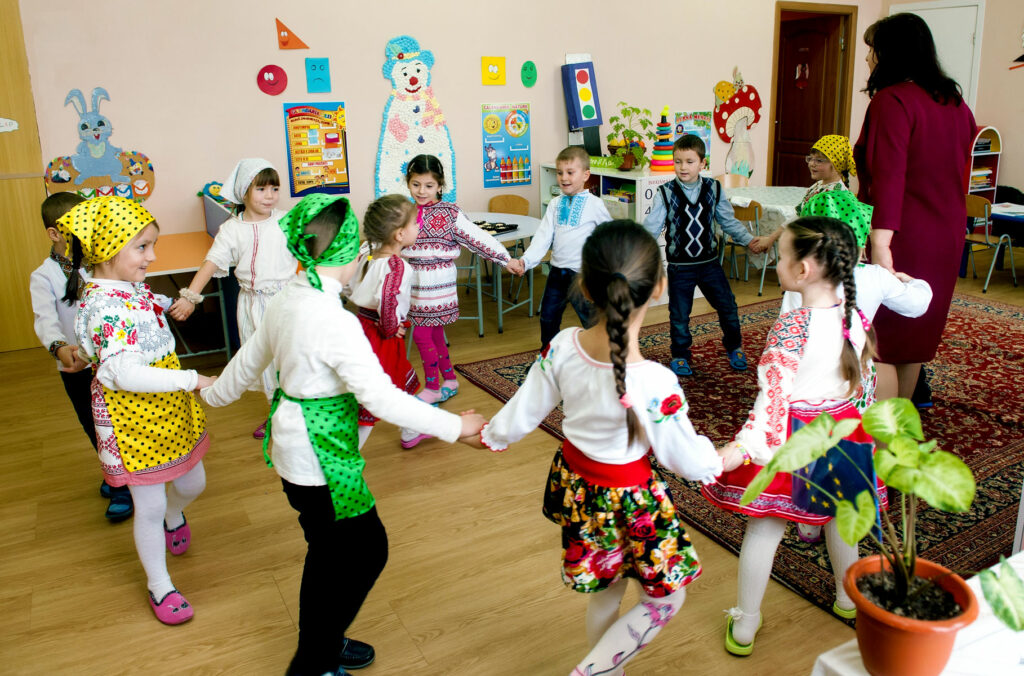 Children at a green school in Cotul Morii village
Children at a green school in Cotul Morii village
Peter Michalko, Ambassador of the European Union to the Republic of Moldova, is convinced that Moldova has a large capacity for renewable energy production from its own sources. “This means opportunities for creating more jobs, and therefore a new incentive for economic development. It is also important to mention that promoting renewable energy projects allows money to remain at home, in the Republic of Moldova,” he declares.
“The Energy and Biomass Project strengthens the cooperation between the EU and Moldova, as a concrete example of European assistance contributing to the improvement of the living conditions of citizens,” states the Ambassador. “Today, nearly 200,000 people across the country feel the effects of the energy efficiency.”
A more prosperous, sustainable economy
The efforts of the European Union in recent years have supported the creation of a new branch for the national economy – the production of energy from biomass.
This sustainable energy production achieves several goals at the same time: it ensures thermal comfort at a reasonable price, decreases CO2 emissions into the atmosphere, contributes to the country’s development and reduces dependence on traditional energy sources such as natural gas and coal.
 Children at a green school in Cotul Morii village
Children at a green school in Cotul Morii village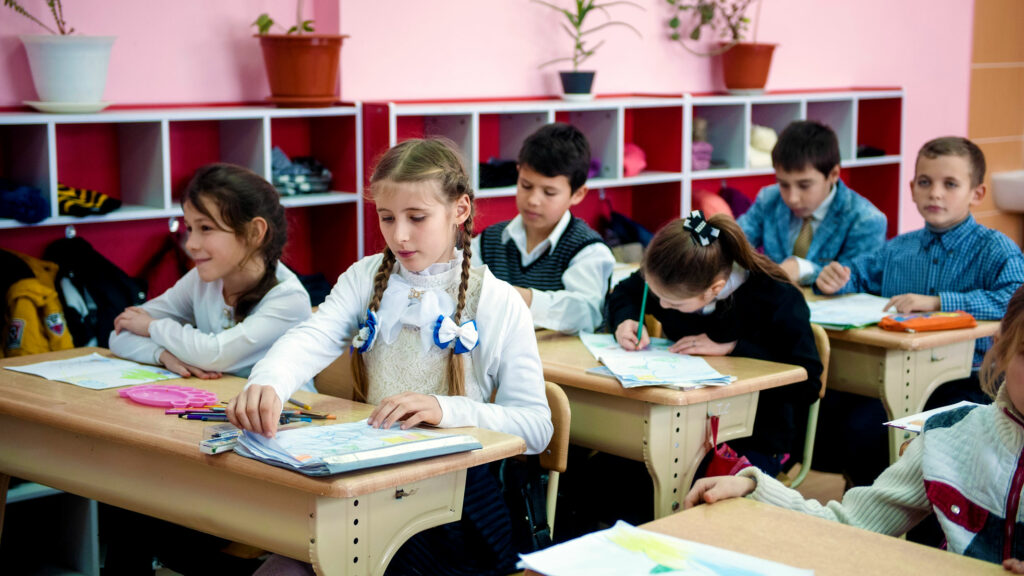 Children at a green school in Cotul Morii village
Children at a green school in Cotul Morii village
Hancesti is among the 33 districts benefiting from the Energy and Biomass Project. The project’s investments in this district amount to €560,742. In turn, eight communities have supported the efforts to switch to green energy with €153,820. The Energy and Biomass Project, part of the EU4Energy initiative, is funded by the European Union and implemented by the United Nations Development Programme in Moldova.
Author: Mariana Tabuncic
This article was produced with the assistance of the European Union under the EU4Energy Initiative. The contents are the sole responsibility of the author and can in no way be taken to reflect the views of the European Union.
Article on Profit.md in Romanian
MOST READ
SEE ALSO
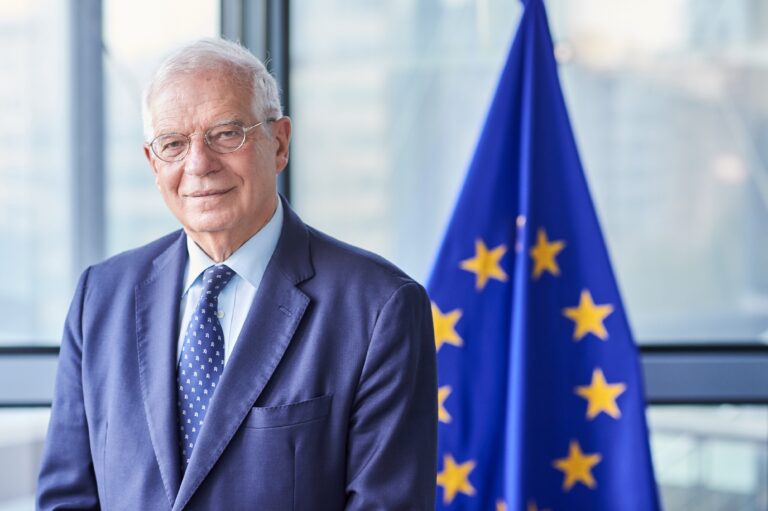
No, time is not on Russia‘s side

How to open an art business in Moldova: the experience of Alexandra Mihalaș

Be one step ahead of a hacker: check simple cybersecurity tips!

How to act and move on: strategies for women facing discrimination and online harassment

‘Learning is not a process but a journey’: the example of a school in Orhei
More campaign pages:
Interested in the latest news and opportunities?
This website is managed by the EU-funded Regional Communication Programme for the Eastern Neighbourhood ('EU NEIGHBOURS east’), which complements and supports the communication of the Delegations of the European Union in the Eastern partner countries, and works under the guidance of the European Commission’s Directorate-General for Neighbourhood Policy and Enlargement Negotiations, and the European External Action Service. EU NEIGHBOURS east is implemented by a GOPA PACE-led consortium. It is part of the larger Neighbourhood Communication Programme (2020-2024) for the EU's Eastern and Southern Neighbourhood, which also includes 'EU NEIGHBOURS south’ project that runs the EU Neighbours portal.

The information on this site is subject to a Disclaimer and Protection of personal data. © European Union,








